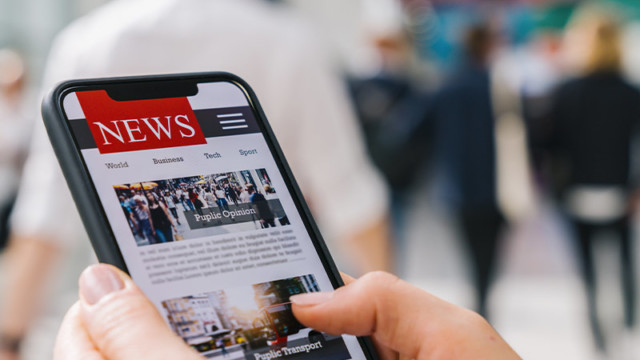Blue Yonder Consumer Retail Returns Survey: Tighter Returns Policies Threaten U.S. Consumer Spending
Findings show that 3 in 4 Millennial and Gen Z consumers are deterred by strict returns policies, highlighting increased urgency for retailers to balance cost reduction with customer centricity
DALLAS – Sept. 17, 2024 – Blue Yonder, the world leader in digital supply chain transformation, today released the results of its 2024 Consumer Retail Returns Survey, which examines how U.S. consumers are experiencing and reacting to increasingly stringent returns policies. Notably, the findings reveal the importance that most consumers place on returns policies, with 91% of those surveyed acknowledging that a lenient returns policy influences their buying decisions. Among them, Gen Z and Millennial purchasing decisions were most impacted, with 3 in 4 consumers stating that tighter returns policies deterred them from making purchases. In addition, the survey found significant shifts in consumer behavior compared to the 2023 survey that underscore both challenges and opportunities for retailers in adapting to these changes.
“We’re seeing that tighter returns policies are starting to deter consumers from making purchases, particularly among the Gen Z and Millennial generations,» said Tim Robinson, corporate vice president, Returns, Blue Yonder. «Retailers have long acknowledged that they needed to tackle returns to reduce costs – the challenge now is to strike a balance between protecting their margins and maintaining a customer-friendly returns experience.»
Tighter Returns Policies Deter Buyers
Of consumers who are aware of stricter returns policies, 69% state that tighter returns policies are deterring them from making purchases, which is up significantly from 59% in 2023. This trend is most pronounced among Gen Z and Millennial respondents. When distinguished as separate generational groups within the survey population, approximately three quarters of respondents from these two generations (Gen Z, 76%; Millennials, 74%) said tighter returns policies deterred them from making a purchase.
When asked about the tighter returns policies, 51% of survey respondents felt restrictions on returns are either inconvenient or unfair, with 37% saying they were fair and understandable.
Returns Frequency and Common Causes
Over half the survey group (56%) reported making a return only once or twice a year or less. Other responses included 22% make a return every few months, 6% once a month, and 6% every couple of weeks or more. Only 10% said they have never returned an item. Moreover, there is a generational divide among consumers who have never returned a purchased item. Of those respondents who hadn’t returned an item, Gen Z was the highest with 39% followed by Gen X at 27%, Millennials at 22% and Baby Boomers at 13%.
Consistent with last year’s survey, 75% of respondents cite the most common reason for returns is incorrect sizing. Other reasons cited by respondents include item damage at 68%, followed by changing one’s mind or disliking the item (49%), and receiving the wrong product (47%).
The Cost of Returns: Who Pays?
The returns process from the retailer’s side is costly, and many are now telling consumers to keep unwanted items to avoid the expensive and labor-intensive processes associated with reverse logistics. Almost three out of four consumers surveyed (72%) have been given this direction by a retailer. The top three categories this occurred in according to respondents was clothing & accessories (34%), home & kitchen (17%), and electronics (15%).
Offering a discount or incentive for a future purchase can persuade customers to keep items they might otherwise return. In fact, 62% of respondents said they are likely or very likely to keep a product if given such an offer, highlighting the importance of this strategy for retailers.
When asked how much they would be willing to pay to return an item, 27% said $1-$5, 10% said $6-$10, 15% said $11-$15, 13% said $16-$20, and 3% said more than $20, while the remaining 32% said they would not return an item if there was a fee.
Third-Party Returns
With convenience and cost a greater consideration than ever, consumers are showing clear interest in third-party returns services (such as a drop-off location, mailing service, etc.). When asked what factors would make them use a third-party returns service, 62% of consumers said lower or no shipping fees, 60% cited the convenience of drop-off locations, 47% said faster refund processing, 39% cited assurance of hassle-free returns, and 38% said reliable tracking and confirmation of returned items.
“Where the goal is to mitigate the cost of returns, retailers should be looking for ways to do more than tightening their policies to reduce returns rates,” said Robinson. “Gathering data and automating intelligent decision-making for every return will bring costs down through more efficient transportation and reduced waste without impacting the customer experience. That data is also incredibly valuable to reduce returns rates, helping retailers to see the patterns of which items are returned, by which customer segments, and why; and to act accordingly.”
Sustainability Plays a Factor in Returns
A majority of consumers are dedicated to sustainable returns habits, with 55% saying they are very or somewhat concerned about the environmental impact of returning items. When asked what action they would take if they knew their returned item would go to a landfill, 36% said they would seek an alternative, eco-friendly disposal method, 35% would attempt to resell the item, and 27% would continue with the returns process as planned.
Additional Resources:
- To learn more about how Blue Yonder makes the first and last mile more seamless, visit blueyonder.com
- Check out the infographic on key survey findings
- Learn more about Blue Yonder Returns Management
Research Methodology
The Blue Yonder Consumer Retail Returns Survey was fielded by a third-party provider July 12, 2024. Blue Yonder surveyed 1,000+ U.S. consumers to gather insights on how returns restrictions are impacting shopping behaviors. Responses were collected from consumers who confirmed they were aware of increasingly tightened returns policies.
About Blue Yonder
Blue Yonder is the world leader in digital supply chain transformation. Retailers, manufacturers and logistics service providers worldwide rely on Blue Yonder to optimize and accelerate their supply chain from planning through fulfillment, delivery, and returns. Blue Yonder’s AI-driven supply chain platform and multi-enterprise, multi-tier network enable more accurate forecasting and dynamic management of capacity, inventory and transport. Blue Yonder helps businesses navigate modern supply chain complexity and volatility with more resilient, sustainable supply chains to delight customers, scale profitably, and run flawlessly. blueyonder.com
“Blue Yonder” is a trademark or registered trademark of Blue Yonder Group, Inc. Any trade, product or service name referenced in this document using the name “Blue Yonder” is a trademark and/or property of Blue Yonder Group, Inc. All other company and product names may be trademarks, registered trademarks or service marks of the companies with which they are associated.
###
In The News
- SiliconANGLE/theCUBE: «Road to Intelligent Data Apps» – Agentic Supply Chain Management

- Diginomica: Blue Yonder aims for ‘one speed’ supply chains with new AI and knowledge graph updatesDiginomica:

- Diginomica: Five key steps US businesses can take to prepare for tariffs

- Taking Stock With Trinity Chavez: Duncan Angove

- theCUBE + NYSE Wired: NRF Media Week – AI Retail Leaders (Duncan Angove)

Analyst Reports
- IDC Market Analysis Perspective: Middle East, Türkiye, and Africa Supply Chain Management Applications, 2024

- IDC Market Analysis Perspective: European Enterprise Applications, 2024

- IDC Worldwide Supply Chain Management Applications Market Shares, 2023: Maintained Focus

- IDC Worldwide Supply Chain Integrated Planning Applications Market Shares, 2023: Orchestration Extended

- IDC Worldwide Supply Chain Warehouse and Inventory Management Applications Market Shares, 2023: Warehouse Automation

Media Relations Inquiries
Marina Renneke, APR
Global Corporate Communications Senior Director
Rossella Benti
EMEA Corporate Communications Director
Meredith Mackintosh
NA Corporate Communications Manager
mediarelationsteam@blueyonder.com
480-308-3037
Analyst Relations Inquiries
Celeste White
Vice President, Global Analyst Relations
Sarah Hart
Program Director, Global Analyst Relations
Lindsey Hiefield
Program Manager, Global Analyst Relations
analyst.relations@blueyonder.com

